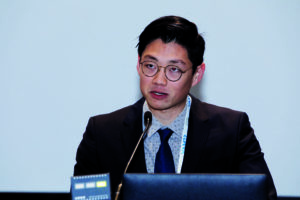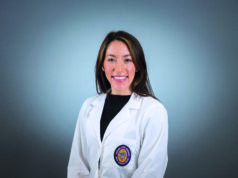
A study of the impact of Vascular Surgery Interest Groups (VSIGs) can have on piquing awareness and engagement of medical students in the specialty found a spike among first years taking electives in vascular surgery after a series of interest group meetings were initiated.
The finding was delivered under the title “Gaining access: Events with the greatest impact on student interest in vascular surgery” during the International Fast Talk session at the 2022 Vascular Annual Meeting (VAM) in Boston (June 15–18).
Presenting author Richard Li, BS, a third-year medical student at Carle Illinois College of Medicine in Urbana, Illinois, and colleagues investigated the relationship between the type of event staged and the impact it had on retaining event attendees, increasing interest in vascular surgery, and enhancing knowledge and awareness of the field.
Li pointed out an important backdrop to the research: These days, more than 70% of matched medical students in surgical specialties identified surgery as their top choice by the second year of medical school, he said.
The Carle VSIG held four interest group meetings throughout the school’s fall semester—one each with the group’s physician mentor, a vascular surgery resident, the program director of the Carle vascular surgery residency program, and demo deployments from industry representatives.
“Before each event, students were asked to fill out a form inquiring about their interest and knowledge of the field of vascular surgery on a scale of 1–10, with 1 being the lowest interest and knowledge,” Li detailed. “After each event, students were again asked to fill out a form which included the same questions regarding their interest and knowledge of the vascular surgery field.”
Li said the research team found that post-event surveys showed students as having a high interest in vascular surgery: “The average level of interest stayed consistent with minor fluctuations before and after the events. Of note, the event with the program director had the largest increase, from 5.91 to 7.53. Regarding interest in vascular surgery, each event had a high standard deviation. This could be due to students who are both changing their opinions and solidifying their thoughts about vascular surgery as a career choice.”
The students who attend the VSIG’s events tend to have an interest in vascular surgery, Li added, “and we do find that a large standard deviation for change of interest is a desirable outcome—having a student go from a two to an eight is just as important as an eight to a two.” Attendance was “very high,” he said, averaging between 20–30 students from an average class size of 50.
“Why does this matter?” he pondered. Just 13% of students were interested in vascular surgery when they arrived. “Since we’ve started, over seven students have elected to do electives in vascular surgery, with five of them starting their first year of medical school—up from zero.”
VSIGs “definitely” have an impact, Li said, “and I highly recommend for this to be a call to action to reach out to your VSIGs.” Li and colleagues plan to put the data from the study to use in order to develop a series of events with “maximum impact” for increasing exposure and awareness of vascular surgery.
“Event responses demonstrate that VSIGs are critical to educating medical students about vascular surgery and promoting interest in the field.”
Moderator Ahmed M. Abou-Zamzam, MD, noted an element of surprise at the statistic showing they had established 13% interest in vascular surgery from “the get-go.” He further asked whether the research group had tracked elements such as food offerings. “Two of the events, we actually had no food,” Li said in response. “We still managed to get high representation.”












